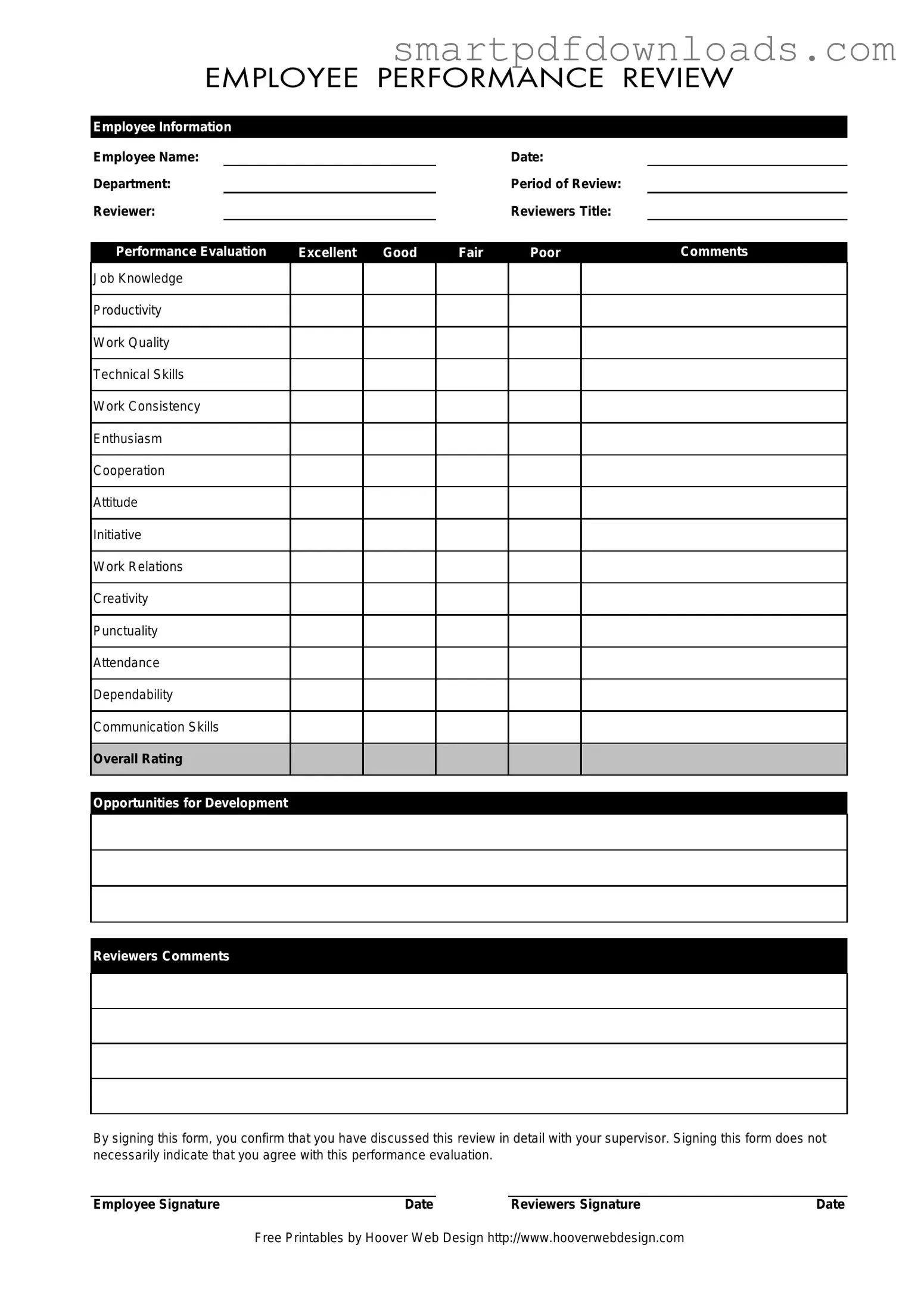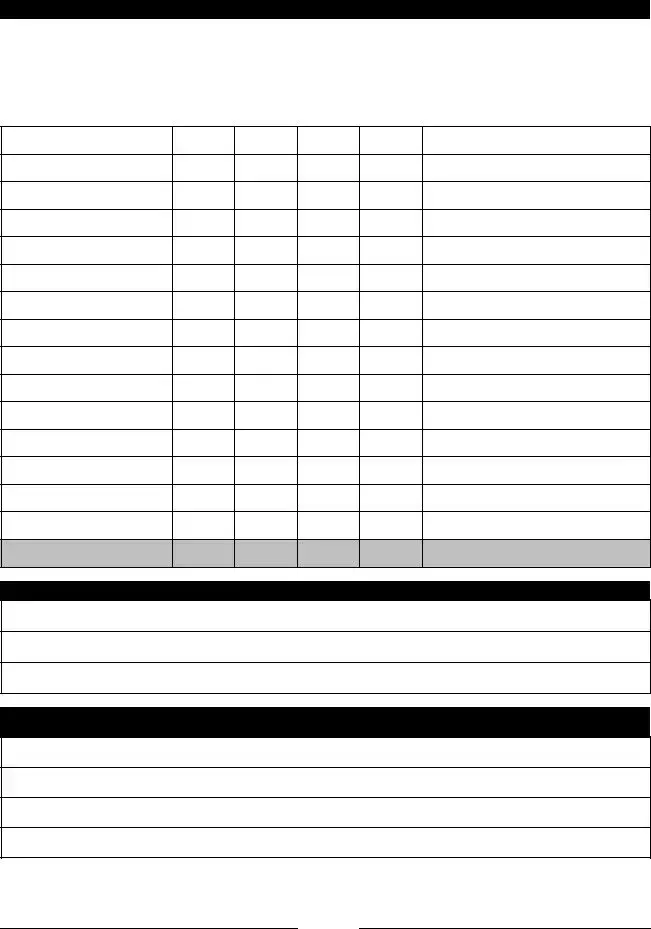Employee Form
The Employee form is a vital document used to evaluate an employee's performance over a specific period. It captures essential information, such as the employee's name, department, and various performance metrics, allowing for a structured review process. By signing this form, both the employee and reviewer acknowledge the discussion of the evaluation, although the signature does not imply agreement with the assessment.
Edit Employee Online

